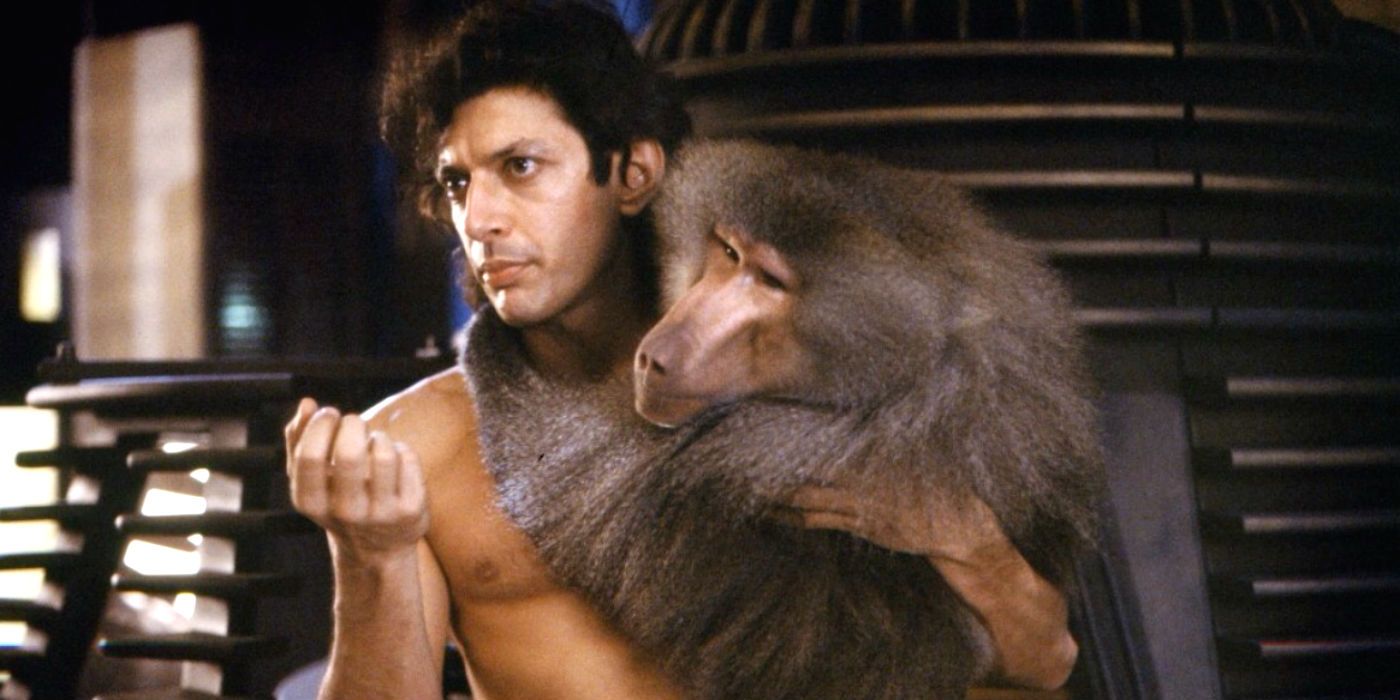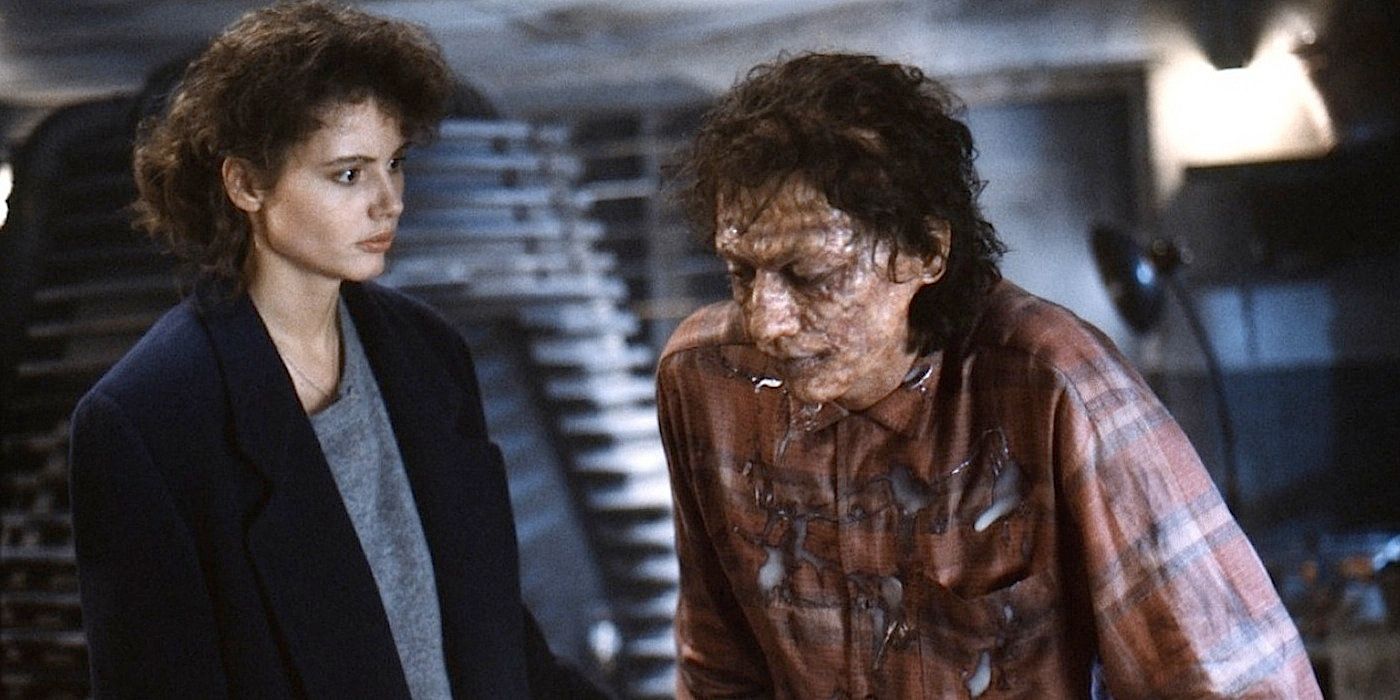David Cronenberg's 1986 remake of The Fly is widely regarded as one of the finest pieces of horror cinema, but one particularly brutal scene from the film didn't make the final cut. While it never shies away from depicting stomach-churning bodily mutations, its true heart lies in the tragedy of protagonist Seth Brundle's physical and mental deterioration. The narrative is ultimately a character drama as much as it is body horror, inviting the audience to sympathize with Brundle before his heartbreaking downfall. This is why the creative minds behind The Fly decided to cut a disturbing scene in which a mutated Brundle creates a monkey-cat hybrid monster and beats it to death with a lead pipe.
Director David Cronenberg intended for the grisly film to leave an emotional impact and thus believed that it was crucial for the audience to find compassion in the struggles of Doctor Brundle, played by Jeff Goldblum. At the beginning of the story, he is a quirky scientist who seeks the best intentions for his teleportation machine, despite his eccentricities. Brundle's romantic feelings towards journalist Veronica Quaife, who interviews him about his project, further establishes his genuine human empathy so viewers can emotionally connect with him. As the film goes on and our main character slowly transforms into "Brundlefly," it becomes clear that he is as much a victim of his own ambition as he is a horrifying monster. The film's tension lies in Brundle's struggle to maintain his humanity as his body and mind become more perverted and animalistic.
The memory of Brundlefly's past self is what makes this dark metamorphosis so compelling, and why it was so necessary to delete the infamous "monkey-cat" scene from the final cut. In the documentary Fear of the Flesh: The Making of 'The Fly,' which was included in the 2005 special edition DVD release of the film, producer Stuart Cornfeld explains why this moment hurt Brundle's character development and how it lost the audience's sympathy during a test screening in Toronto.
Why Audiences Couldn't Handle The "Monkey-Cat"
Cornfield pointed out in the documentary that, even though the film is about a protagonist who "on some level becomes the antagonist," it was still essential to have the audience connect to the character's plights throughout the entire story. "If you beat an animal to death with a lead pipe, even if it's a cat-monkey", viewers no longer have concern for the person whose tragic tale they have been following since the beginning of the movie.
This wouldn't have been the first time Brundle had harmed an animal, as earlier in the film he accidentally turns a baboon inside-out during a trial run of his invention. However, he shows remorse for his actions and uses the opportunity as a way to attempt to fix the machine's flaws. In the case of the monkey-cat incident, the coldness in his decision to fuse the animals together and the sheer brutality in which he bludgeons the monstrous result made Brundle too villainous for test audiences to relate to. The scene was cut for the same reason as to why another planned scene remained unfilmed. In that instance, Brundlefly pukes on and liquifies a homeless woman's face. If the torture and murder of animals weren't enough to make moviegoers turn on their established protagonist, then surely they would have rooted for Brundlefly's imminent demise if they witnessed this gruesome interaction.
The conflict of most horror films results from the main characters dealing with an external, villainous threat as they are forced to fight for their survival and well-being. The Fly is unique among the genre's output in its portrayal of a protagonist fighting against his own personal urges to retain his sense of humanity. As Stuart Cornfeld noted, the story is a tragedy in nature, and thus viewers are supposed to mourn Brundle's suffering and loss of identity and sanity. His act of repulsive violence within the deleted monkey-cat scene alienates those who are supposed to sympathize with his slow, sickly decline.


